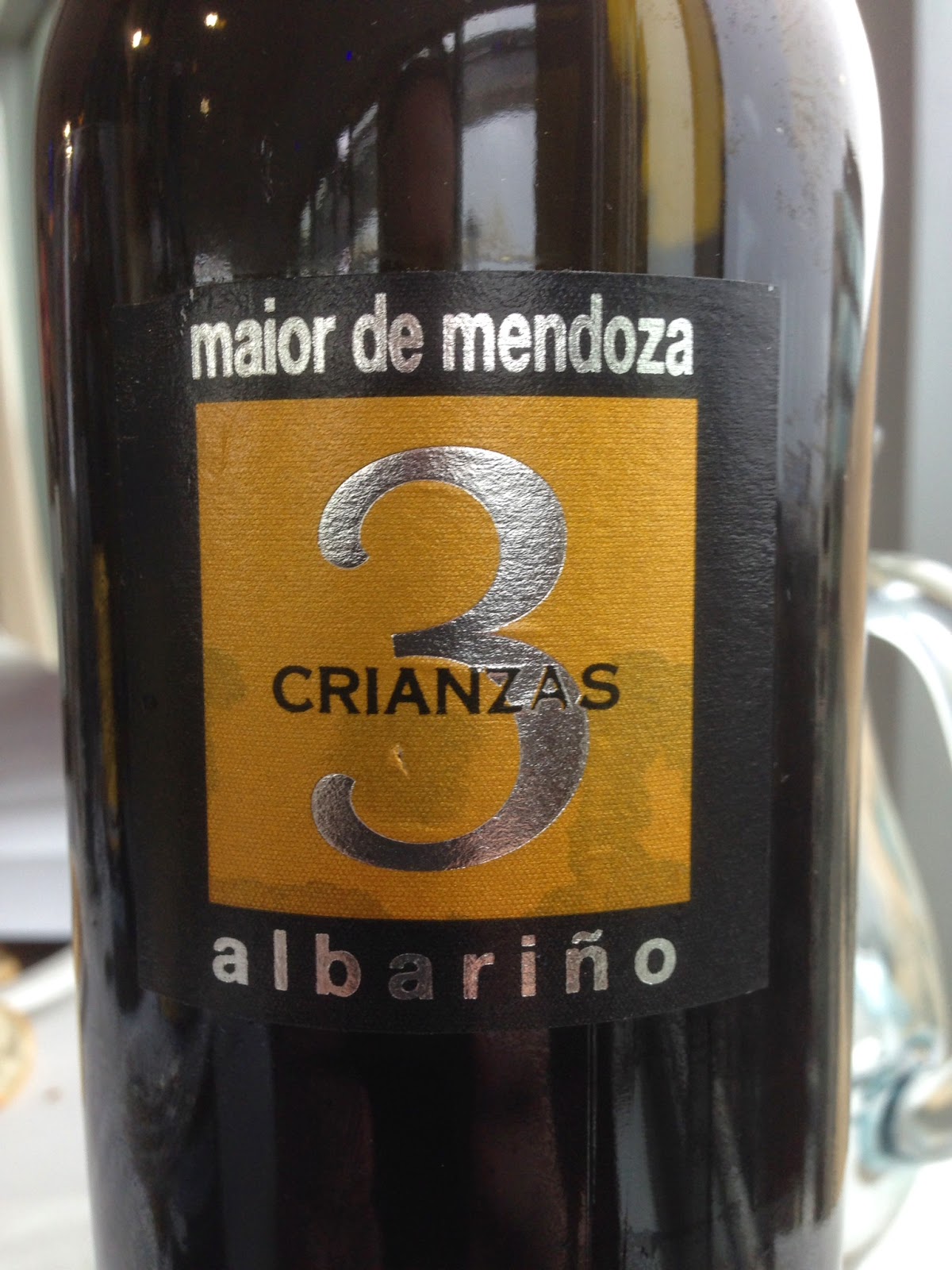Rías Baixas is perhaps the mostly highly-rated Spanish region for white wine, producing fragrant, zingy, and very dry wines from the Albariño grape. A tasting in Manchester, mainly from the recent 2013 vintage, gave me a chance to explore the styles of this popular and well-regarded region.
 |
| Rías Baixas on a rainy July Manchester afternoon |
 where is it?
where is it?
Rías Baixas is in Galicia, a wet, green region in north-west Spain, bordering northern Portugal, with a climate dominated by the Atlantic Ocean. The name Rías Baixas itself refers to the rocky bays that jut into the land and give the area its distinct identity. It's split into five separate sub-zones: Ribeira do Ulla, the furthest north near the pilgrim town of Santiago de Compostela; coastal Vol do Salnés; tiny Soutomaior; O Rosal, which heads inland from the coast on the Portuguese border; and Condado do Tea, further inland from O Rosal. In the tasting, I was most consistently impressed by the wines from Salnés and O Rosal, where the floral, stone fruit aromas are finished off with a saline minerality.
what's the grape?
Almost all Rías Baixas is made from Albariño, known as Alvarinho in neighbouring Portugal. It's at its best without oak, producing fresh, crisp wines which can be floral and fruity and, at their best, with a dry mineral finish. It's considered a wine best drunk young, though some producers are experimenting with more ageworthy wines.
what did I like?
A fragrant, floral nose with melons and apricots and a dry mineral finish.
From a well-known producer, this wine has a very giving nose, with engaging floral and stone fruit aromas. The palate becomes much more complex, the sweetness of the fruits giving way to a long dry finish. This has seen some ageing - nine months on its lees in stainless steel tasks - which adds to the wine's complexity, without taking away from the grape's flavours.
My favourite label of the day, which was backed up by the wine inside the bottle. This wine was very stony in its dry minerality and stone fruits, where it felt like tasting the stones of the fruits rather the juice. Like many of the wines on show, this would be a perfect accompaniment to a seafood dish and would improve drunk alongside food.
A wine trying something a bit different: aged on its lees for nine months, a further five months in stainless steel, and a final five in the bottle before release, hence its name 3 Crianzas (aged three different ways). The lees give the wine a richness that could be mistaken for oak, as well as a nutty yeastiness. The ageing process has not interfered with the expression of the grape, however: there is still a floral fruitiness to the wine and a dry, balanced finish.

Without a shadow of doubt, the wine of the tasting but also the least typical of the area. Aged for two and a half years on its lees with another year in the bottle, and now over seven years old, this has a rich, creamy, yeasty, nutty aroma and texture, with a long tasty mouthfeel. A superb, complex wine.

 where is it?
where is it? Valmiñor 2013 (Salnés, £15)
Valmiñor 2013 (Salnés, £15) Fillaboa Seléccion Finca, Monte Alto 2012 (Condado do Tea, £20)
Fillaboa Seléccion Finca, Monte Alto 2012 (Condado do Tea, £20) Santiago Ruiz 2013 (O Rosal, £11)
Santiago Ruiz 2013 (O Rosal, £11) Maior de Mendoza 3 Crianzas 2011 (Salnés, £12.50)
Maior de Mendoza 3 Crianzas 2011 (Salnés, £12.50)

No comments:
Post a Comment